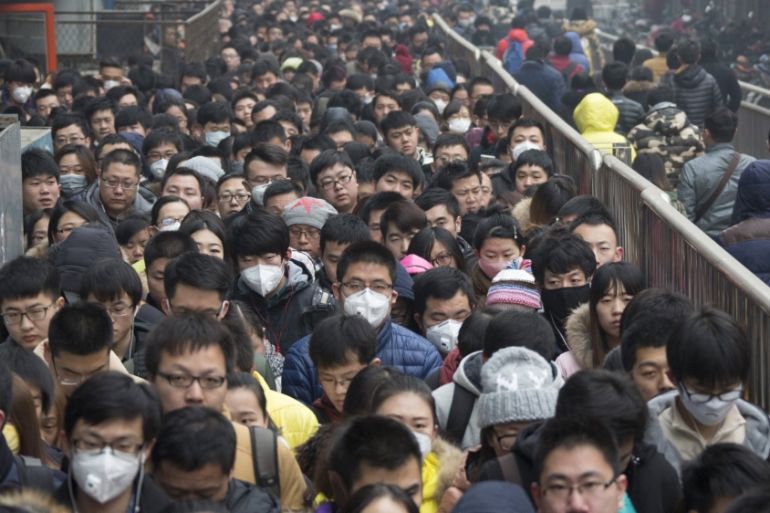Beijing red alert for smog prompts partial shutdown
Half of private cars ordered off streets and many construction sites and schools closed as grey haze envelops city.

Half of Beijing’s private cars have been ordered off the streets and many construction sites and schools closed after the government raised the alert on pollution in the Chinese capital to the highest level, red.
A grey haze descended on Tuesday on the city of around 21.5 million people, with levels hitting above 300 micrograms per cubic metre, according to the US embassy, which issues independent readings.
Keep reading
list of 4 itemsCould shipping containers be the answer to Ghana’s housing crisis?
Thousands protest against over-tourism in Spain’s Canary Islands
Holding Up the Sky: Saving the Indigenous Yanomami tribe in Brazil’s Amazon
The World Health Organisation’s recommended maximum exposure is 25.
The alert coincided with global climate change talks in Paris, where Chinese President Xi Jinping has vowed “action” on greenhouse gas emissions.
Al Jazeera’s Adrian Brown, reporting from Beijing, said the pollution level on Tuesday was much lower than that reported on November 30, when the pollution index hit as high as 634 in some areas.
READ MORE: Clearing Beijing’s air pollution
But the Chinese government “was stunned into action” after being openly criticised last week, and it wanted to show that is was responding to the public by issuing the red alert.
Still, the level of pollution remains dangerous, Brown said.
“You can see the pollution, you can taste the pollution,” he said.
At 9am in Beijing on Tuesday, official pollution index reported a level of 261, which was higher than the 250 index reported by weather monitors at the US embassy in Beijing.
|
|
Al Jazeera’s Bo Gu, also reporting from Beijing, said more people were wearing masks on the streets of the capital.
“We all have masks. The air smells like burned coal. Some of my friends have worse reactions like coughing and stinging in the eyes,” Bo Gu said.
Most of China’s greenhouse gas emissions come from burning coal for electricity and heating, which increases when demand peaks in winter, and is the main cause of smog.
Under the alert – the highest in a four-tiered, colour-coded warning system – outdoor construction sites are ordered to close, and some schools are urged to do so as well, with several Beijing residents saying their children had been told to stay at home.
An odd-even number plate system also means that half the city’s private cars are not allowed on the streets on alternate days.
According to official statistics, almost 4.4 million private cars were registered in the Chinese capital at the end of 2014.